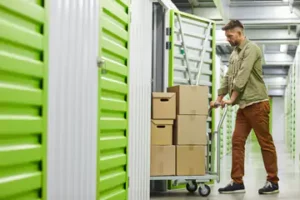
An HVAC technician works closely with people and responds to a variety of service calls. He or she must be skilled in diagnosing problems and adjusting systems. A career in HVAC repair is not for the faint of heart. However, it does involve a great deal of physical labor. A technician may have to climb ladders or crawl into small spaces. They may also have to climb rooftops. Here are a few common problems that HVAC technicians may encounter.
First, an HVAC unit may be making odd noises. This could be a faulty component or a simple power outage. To determine if your unit is not working, you can check your circuit breakers. Switch them off for 10 seconds, then turn them back on. If you don’t see any signs of this, call a professional to come to check it out. Check the thermostat batteries, too. If they’re all good, you may need an HVAC repair technician to replace apart.
If you think that the problem is more complicated, you may want to consult an HVAC repair specialist. While an appliance repair specialist can work on a cooling system, an HVAC repair specialist can diagnose and repair the problem. These specialists have the appropriate training and equipment to handle HVAC issues. A qualified technician can also diagnose and repair heating and cooling systems in homes. HVAC repair specialists are also more experienced in diagnosing and fixing problems in home appliances. However, HVAC repair specialists are best suited to deal with more complex issues.
Fortunately, there are HVAC repair contractors that offer fixed prices for common and minor jobs. This can save you a great deal of money. Remember to pay extra if you need emergency services. Emergency services, however, can cost double or even triple the regular rate. You’ll have to pay an additional $50 to $100 per hour to get emergency service. If you need an emergency repair, you can even pay the technician an extra $40 to 80 per hour for after-hours or weekend visits.
An HVAC repair specialist can also be contacted for emergencies. These can range from sensor problems to refrigerant leaks. The problem can be dangerous if not addressed quickly. When you need HVAC repair, it’s crucial to find a company that offers 24-hour service and can fix the problem right away. That way, you can have peace of mind knowing that you’re protected in the event of an emergency. A 24-hour HVAC service company can come to your home in the middle of the night and keep you comfortable during the day.
Aside from emergency repair, regular maintenance of HVAC systems is a must. Not only does it keep your home comfortable during the entire year, but it also helps your HVAC system produce air more evenly. Getting regular maintenance done ensures that your system will continue to perform at a high level for a long time, reducing the chances of unexpected cold air. Regular cleaning can also help you avoid the need for emergency repairs in the future. A regular check-up can also help your HVAC system last longer and reduce energy bills.
Fortunately, the average HVAC repair service costs about $100. An annual maintenance contract can save you several hundred dollars, as these technicians will come to your home once or twice a year. It’s also wise to consider an HVAC tune-up every two years. For about seventy dollars, a technician will clean and replace worn parts, clean filters, blow out the dust, and swap fan blades. Depending on the type of system, an annual service can save you as much as $600 or more.
Additionally, if you work in an HVAC repair company, you’ll have to keep detailed records of your efforts. As an HVAC technician, you’ll spend a lot of time communicating with clients and making sure your system is working properly. Maintaining accurate records is crucial to the success of your business, as well as the safety of your clients. You’ll also need to order new parts and bill your customers appropriately. A technician’s job is to help clients feel comfortable in their homes.


